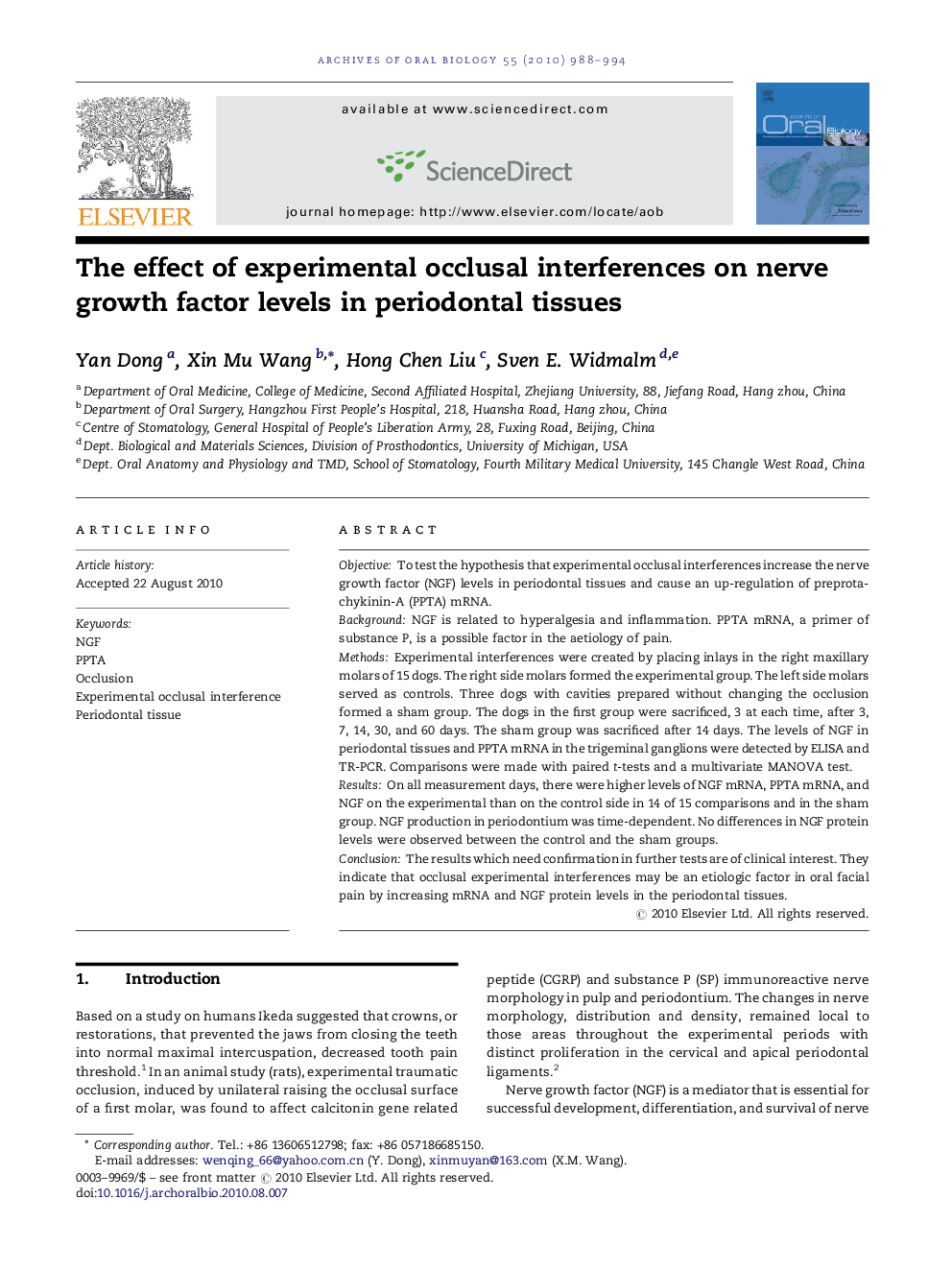| Article ID | Journal | Published Year | Pages | File Type |
|---|---|---|---|---|
| 3121044 | Archives of Oral Biology | 2010 | 7 Pages |
ObjectiveTo test the hypothesis that experimental occlusal interferences increase the nerve growth factor (NGF) levels in periodontal tissues and cause an up-regulation of preprotachykinin-A (PPTA) mRNA.BackgroundNGF is related to hyperalgesia and inflammation. PPTA mRNA, a primer of substance P, is a possible factor in the aetiology of pain.MethodsExperimental interferences were created by placing inlays in the right maxillary molars of 15 dogs. The right side molars formed the experimental group. The left side molars served as controls. Three dogs with cavities prepared without changing the occlusion formed a sham group. The dogs in the first group were sacrificed, 3 at each time, after 3, 7, 14, 30, and 60 days. The sham group was sacrificed after 14 days. The levels of NGF in periodontal tissues and PPTA mRNA in the trigeminal ganglions were detected by ELISA and TR-PCR. Comparisons were made with paired t-tests and a multivariate MANOVA test.ResultsOn all measurement days, there were higher levels of NGF mRNA, PPTA mRNA, and NGF on the experimental than on the control side in 14 of 15 comparisons and in the sham group. NGF production in periodontium was time-dependent. No differences in NGF protein levels were observed between the control and the sham groups.ConclusionThe results which need confirmation in further tests are of clinical interest. They indicate that occlusal experimental interferences may be an etiologic factor in oral facial pain by increasing mRNA and NGF protein levels in the periodontal tissues.
